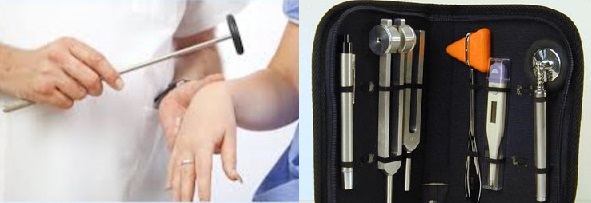Neurological Examination, An Overview
Neurological Examination, An Introduction
Neurological examination is an art needed for correct diagnosis. Correct diagnosis is the basis for correct management.
Clinical method is the basis for diagnosis in all fields of medicine.
In neurological practice, clinical method consists of the following sequential steps:
- History and examination
- Syndromic diagnosis
- Anatomical diagnosis
- Etiological diagnosis
History provides primary clues to underlying disease process (etiological diagnosis) and help the physician to make a diagnostic hypothesis.
Neurological examination is an important skill; Its purpose is to test hypothesis derived from history and localize the lesion (anatomical diagnosis).
Neurological exam is the uniqueness of this specialty.
In the world of technology and advanced imaging and other diagnostic procedures, it remains a purely clinical tool to identify and localize abnormalities of nervous system.
In many cases, definite diagnosis can be made only on the basis of clinical method, or diagnostic studies only have a confirmatory role.
Neurological Examination, A Stepwise Approach
A widely accepted format for the neurologic exam, consisting of the following six subdivisions:
Mental Status
Cranial Nerves
Motor Exam
Reflexes
Sensory Exam
Coordination & Gait
Medical students should learn the complete neurological examination but avoid to do it.
Complete examination is time consuming and reduces patient’s compliance.
Examination must be goal-directed to test the history-derived hypothesis.
Understanding how to best tailor the exam to the clinical situation comes with experience.
Involved systems, should be examined in great detail; other systems are examined only as screening (minimum basic exam).
In most patients, mental state exam is not necessary and you can elicit from history that it is intact.
The process of diagnosis must be flexible and adjusted when needed (new findings can change the primary hypothesis).
Knowledge of neuroanatomy is essential for interpretation of examination results.
Remember that neurological examination is a part of general physical examination, and important general exams are also necessary.
Minimum Basic Examination
- Mental Status: Assessed while recording the history, level of alertness, appropriateness of responses, orientation to date and place
- Cranial Nerves
Visual acuity
Pupillary light reflex
Eye movements
Hearing
Facial strength—smile, eye closure
- Motor Exam: Strength—shoulder abduction, elbow extension, wrist extension, finger abduction, hip flexion, knee flexion, ankle dorsiflexion
- Reflexes: Tendon reflexes; biceps, patellar, Achilles, Plantar responses
- Sensory Exam: one modality at toes—can be light touch, pain/temperature, or proprioception
- Coordination & Gait: fine finger movement, finger-to-nose, normal and tandem gait


4 Comments
ปั้มไลค์
25 June, 2020
Like!! I blog quite often and I genuinely thank you for your information. The article has truly peaked my interest.
Phyllis Cienega
6 September, 2020
Only wanna say that this is very beneficial , Thanks for taking your time to write this.
http://mehfeel.net/mehfeel/blogs/post/206843
Sammie Vinciguerra
16 October, 2020
Great info and right to the point. I don’t know if this is truly the best place to ask but do you guys have any thoughts on where to hire some professional writers? Thank you ?
https://forex-scams.com/trusted-forex-brokers-in-uk/
Tommie Cinnamon
18 October, 2020
I was examining some of your posts on this internet site and I think this web site is very informative ! Keep putting up.
https://forex-scams.com/top-10-forex-analysis-brokers-in-the-world/